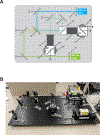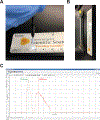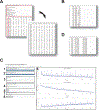Spectrally Resolved Fiber Photometry for In Vivo Multi-Color Fluorescence Measurements
- PMID: 36373979
- PMCID: PMC10018997
- DOI: 10.1002/cpz1.587
Spectrally Resolved Fiber Photometry for In Vivo Multi-Color Fluorescence Measurements
Abstract
This article describes how to assemble and operate a spectrometer-based fiber photometry system for in vivo simultaneous measurements of multiple fluorescent biosensors in freely moving mice. The first section of the article describes the step-by-step procedure to assemble a basic single-spectrometer fiber photometry system and how to expand it into a dual-spectrometer system that allows for simultaneous recordings from two sites. The second part describes the steps for a typical fiber probe implantation surgery. The last section describes how to acquire and analyze the time-lapsed spectral data. This article is intended for teaching labs how to build their own fiber photometry systems (with a video tutorial) from commercially available parts and perform in vivo recordings in behaving mice. © Published 2022. This article is a U.S. Government work and is in the public domain in the USA. Basic Protocol 1: Assembling a dual-laser, single-spectrometer fiber photometry system Support Protocol: Dual-spectrometer fiber photometry assembly Basic Protocol 2: Optical fiber probe implantation Basic Protocol 3: Data acquisition and analysis.
Keywords: fiber photometry • fluorescence • multi-color • spectrally resolved.
© Published 2022. This article is a U.S. Government work and is in the public domain in the USA.
Figures




References
-
- Dana H, Sun Y, Mohar B, Hulse B, Hasseman JP, Tsegaye G, … Macklin J. J. J. b. (2018). High-performance GFP-based calcium indicators for imaging activity in neuronal populations and microcompartments. 434589. - PubMed
MeSH terms
Grants and funding
LinkOut - more resources
Full Text Sources
Molecular Biology Databases

